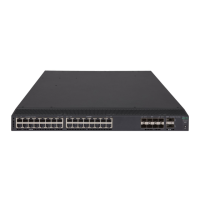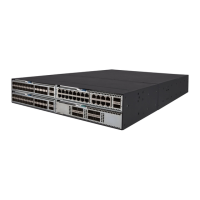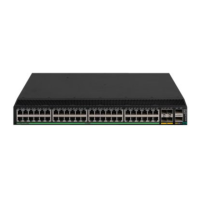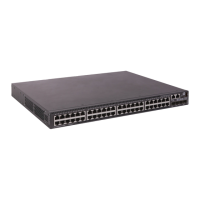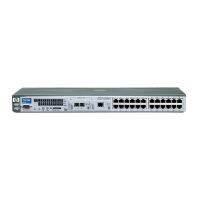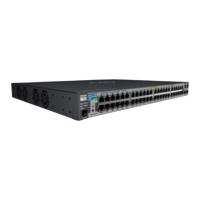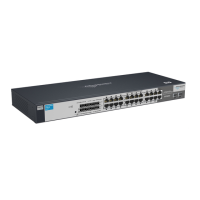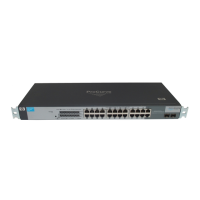42
to notify their concerned registered nodes. As a result, the changed information is notified and updated
throughout the fabric.
NOTE:
• Support for SW-RSCNs depends on the ESS negotiation between switches.
• Concerned registered nodes refer to the nodes that have sent SCR requests to the switch for receiving
RSCNs. Only these registered nodes can receive and respond to ELS_RSCNs.
RSCN aggregation
If changes occur on multiple nodes at the same time, the switch quickly sends multiple ELS_RSCNs for
each change to the concerned registered nodes. This can cause a sharp decline in transmission and
processing performance.
RSCN aggregation can alleviate the problem by using an RSCN aggregation timer. If multiple changes
occur within the RSCN aggregation timer, the switch sends the FC addresses of the nodes with changes
in one RSCN.
Configuration procedure
HP recommends that you enable RSCN aggregation and set the same timer value on all switches in a
VSAN. The RSCN aggregation timer takes effect only when RSCN aggregation is enabled.
To configure RSCN aggregation:
Ste
Command
Remarks
1. Enter system view.
system-view N/A
2. Enter VSAN view.
vsan vsan-id N/A
3. Enable RSCN aggregation.
rscn aggregation enable
By default, RSCN aggregation is
disabled.
4. Set the RSCN aggregation
timer.
rscn aggregation timer time
The default setting is 2000
milliseconds.
You can adjust this timer to control the
frequency the switch responds to node
information changes based on switch
performance.
Configuring and obtaining FC4 information of
nodes
After a node registers with a switch through a FLOGI, the node sends a name service registration request
to the switch to register extended information, including FC4 information.
FC4 information includes the following fields to describe the FC4-layer protocol supported by a node
and the feature of the supported protocol.
• FC4-Type—FC4-layer protocol supported by a node, including SCSI-FCP, IP, SNMP, and NPV.
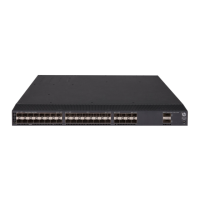
